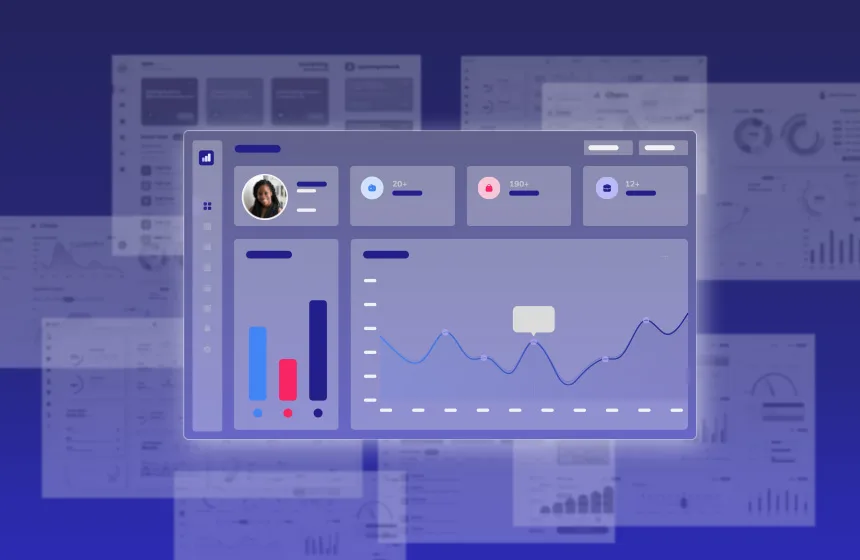Accelerate deals and increase win rates with the leading enterprise AI demo platform.
How to Run a Discovery Call That Sets Up the Perfect Demo

October 16, 2025
Table of Contents
A bad discovery call feels like an interrogation. A great one feels like the beginning of a partnership. Besides the demo itself, it’s the most pivotal moment in your sales cycle. It’s where you move from a generic pitch to a specific, value-driven conversation. But it’s not just about asking good questions and uncovering pain.
The best discovery calls lay the groundwork for a compelling product demo that moves the deal forward. They give you the exact insights you need to tell a personalized story grounded in the prospect’s pain. Let’s break down how to run a discovery call that sets up the perfect demo, every time.
How to structure an effective discovery call
A good discovery call feels like a conversation. That doesn’t mean it’s not structured, though. Discovery calls can follow a rigid framework and still feel free-flowing. Instead of a list of questions, your framework should guide the discussion so you get the information you need without making the prospect feel like they’re being interrogated.
Here’s a sample roadmap that incorporates proven best practices.
1. Start with a clear agenda and expectations
Take control of the call right away. Don’t let the prospect wonder why they’re there or what’s about to happen. You set the tone by laying out a clear, simple agenda.
For example:
“Hey, thanks for the time. For the next 30 minutes, I want to learn a bit about your current setup at [Prospect’s Company] to see if we can actually help. I’ve got a few questions, a couple slides, and a quick demo to help you understand a bit more about us and how we can help. From there, we can figure out if scheduling a full product demo makes sense. Sound good?”
This immediately positions you as a guide. They know what to expect, they know it’s a two-way conversation, and they know the outcome is a decision about the next step, not a hard sell right now.
2. Focus on the buyer’s pain points (and the impact)
This is the whole point of the call. But too many reps identify a problem and immediately jump to the solution. That’s a mistake. You need to dig into the impact of that problem.
For instance, ask open-ended questions like:
- “Walk me through how your team handles [task] today.”
- “What’s the most painful part of that whole process?”
- “If you could fix one thing about that workflow tomorrow, what would it be?”
When they give you a pain point, don’t move on. Stay there. This is where you find out if there’s a real business case. You need to quantify the pain, and let the prospect “linger” in it. Try questions like:
- “How many hours a week does your team lose to that?”
- “What happens to other teams when that bottleneck occurs?”
- “Has this issue ever cost you a customer or a renewal?”
The answers to these questions are the building blocks for your demo. Now you know whether to build a story around saving time, reducing risk, or enabling other teams.
3. Qualify without interrogating
Nobody likes being run through a BANT checklist. You have to get the information, but you need to weave it into the conversation so it feels natural. You’re not there to check boxes; you’re there to understand the prospect’s world. You can stay within your process, while asking natural-sounding questions like:
- Budget: “Have you all bought a tool like this before? What does that process look like?”
- Authority: “Who else usually gets involved when you’re looking at a new tool like this?”
- Need: You already covered this by digging into their pain.
- Timeline: “What’s happening in the business that made this a priority now?”
You’re just trying to understand their world so you can help them navigate it. It’s a partnership, not an audit.
4. Listen more than you talk
This is the oldest advice in the book, and it’s still the most ignored. Your job on a discovery call is to be quiet and listen. Best practices show that top reps talk less than 45% of the time. They let the customer fill the space.
When you hear a problem, fight the urge to interrupt with your solution.
Pause.
Let them finish. Ask a simple follow-up like, “Tell me more about that.” The most valuable information always comes after the first layer of questions. It shows you’re actually listening, which is how you build trust.
5. Set the stage for the demo
The end of the call is your transition to the main event. Don’t fumble it with a weak, “Okay, I’ll send over a calendar link.” You need to create a direct bridge from their pain to your solution.
Summarize what you heard and tell them exactly what they’re going to see in the demo.
“Okay, this was super helpful. It sounds like the big issues are brittle demo environments and the huge amount of time your SEs are sinking into prep work. I’m going to show you exactly how you can build a flawless, custom demo in minutes — not hours. Who else on your team needs to see that?”
This proves you listened, creates a hook for the demo, and makes the demo a logical and necessary step, whether on this call or the next.
Should you show the product during a discovery call?
Most prospects now expect to see the product upfront, but jumping into a demo is often a mistake. That’s why we encourage everyone to be able to demo on the first call without being rigid about requiring sellers to demo.
Finishing discovery is the prerequisite. You should never rush discovery because you think you have to demo. But if you finish discovery and have time left, every seller should be empowered to demo on the spot.
Here are some considerations when deciding when to demo:
- Pros of a first call demo
- It can make the solution feel real and concrete.
- It shows you’re not just selling vaporware.
- For a prospect who is ready to buy, it can speed things up.
- Things to watch out for:
- Demos can derail the conversation, especially if you haven’t finished discovery.
- Without a foolproof demo environment, you risk giving an immediate bad impression of your product.
- You look like every other salesperson who just wants to talk about their product.
The verdict? Be flexible, but always be ready and able to demo.
The smart play is to have a “teaser” ready to go. This is where a flexible demo platform comes in. With Reprise, our SEs and sales people have a library of short, interactive product tours. If a prospect brings up a specific pain, we can instantly share a link or walk them through a two-minute, pre-built demo that addresses that exact issue. It gives them a taste of the value in a guided fashion, without having to dive too deep.
Transitioning smoothly from discovery call to product demo
The worst thing you can do is make the SE start from scratch on the demo call. All the rapport and information you gathered in discovery gets lost, and the prospect has to repeat themselves. It kills momentum.
Think of it this way: discovery gives you the script for your demo. You know the characters, the problems, and what a happy ending looks like. Your job is to use that script.
Send an agenda before the full demo call that connects directly back to the discovery conversation.
“Looking forward to our call Thursday. Based on our last chat, we’re going to focus on:
- How to cut that demo prep time you mentioned by 80%.
- A plan to get your AEs running their own early-stage demos.
- How to guarantee your demo environment is stable for every single call.”
Now the demo isn’t just a product showcase. It’s a direct answer to their problems.
Tools that help you connect discovery to demo
The space between discovery and the demo is where deals go to die. Information gets lost in translation from the AE to the SE, context is missing, and the demo ends up being generic. You need tools that close that gap.
Your CRM is fine for notes, but it doesn’t help you build anything. You need a platform that lets you act on discovery insights fast.
This is why we built Reprise. Think about this scenario: You finish a discovery call. The prospect needs to show a complex workflow, and they need it populated with data for the healthcare industry.
The old way? An SE spends the next two weeks begging for engineering resources.
The new way? An SE using Reprise can:
- Clone the relevant product area instantly. Our Agentic Demo Builder uses AI to automatically capture the app and write the code to make the clone work out of the box. The tedious, manual part of the setup is gone.
- Populate it with relevant data. Our AI data injection can create a full set of realistic healthcare data in a few clicks. The demo now speaks the prospect’s language.
- Customize the story. They can quickly tailor the demo to walk through the exact solution to the problem the prospect shared on the discovery call.
This is how you scale. SEs can finally spend their time on storytelling and strategy, not fighting with broken demo environments. They connect discovery directly to the demo they deliver.
Better discovery, better demos
Great demos don’t happen by accident. They are the direct result of a great discovery call.
When you nail the discovery, you earn the right to give a demo. You have the insights you need to build something that solves a real problem.
Ready to build interactive demos that actually reflect what you learned in discovery? See how Reprise’s AI-powered platform can help you build the perfect demo.
FAQs
How long should a discovery call be?
Keep it to 30 or 45 minutes. That’s enough time to get what you need without burning out your prospect. It also gives you time to sneak in a quick demo if you have time.
What questions should I ask on a discovery call?
Stick to open-ended questions about their process, their problems, and their goals. Questions like, “Walk me through how that works today,” and “What happens when that breaks?” will tell you everything you need to know.
What’s the difference between a discovery and a qualification call?
A qualification call is mostly for you to see if a lead is worth your time. A discovery call is a two-way conversation to see if you can genuinely solve their problem. You qualify during discovery, but the main goal is to understand their world, not just to check your boxes.






